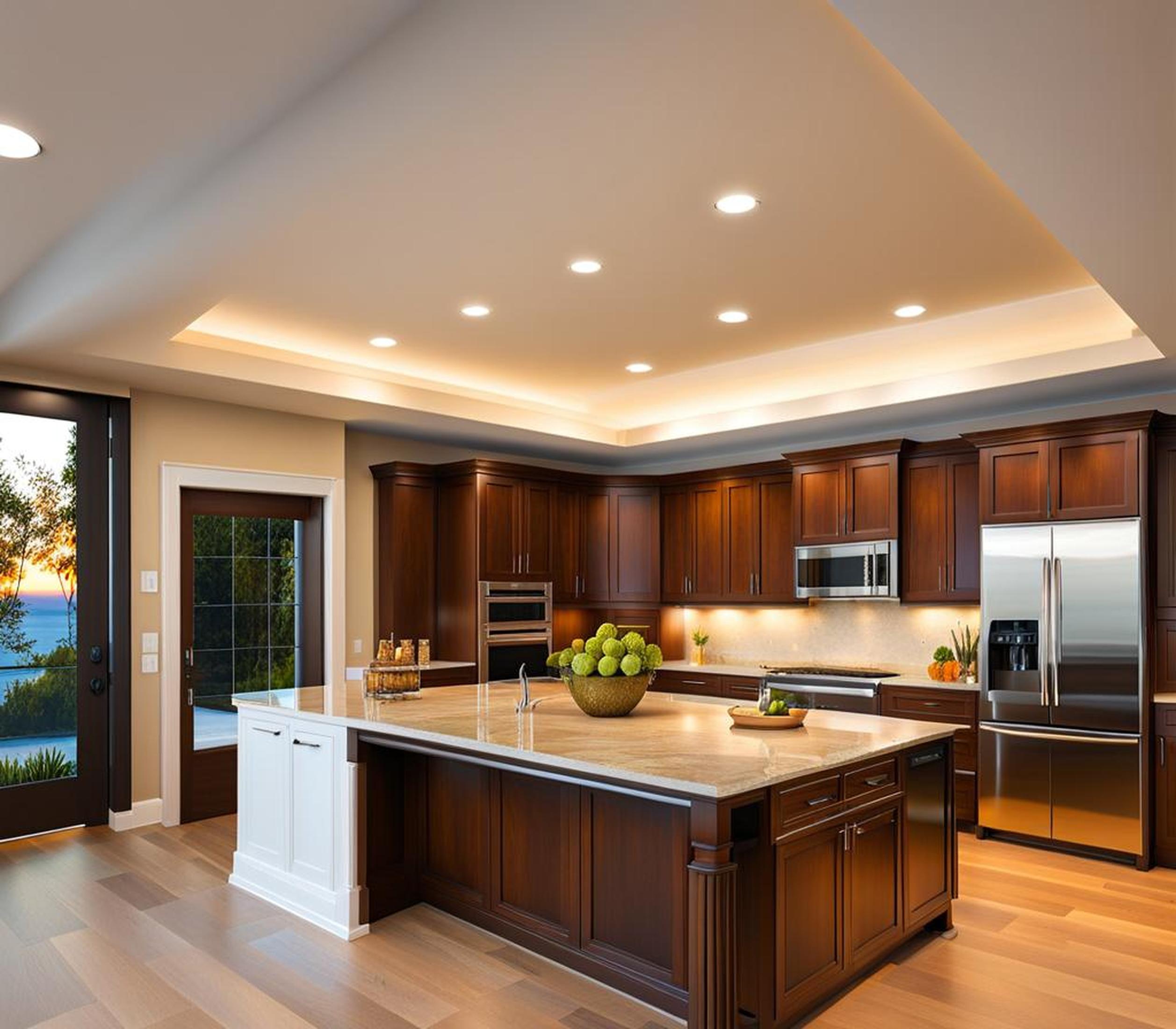With so many options for recessed lighting these days, one common dilemma that comes up is whether to install can lights or canless fixtures . Both provide that desirable recessed appearance, but they have some key differences that impact your home’s lighting design.
Read on to finally solve the can vs canless confusion!
What Are Can Lights?
First, let’s clarify exactly what can lights are. Also known as recessed can lighting or traditional recessed lighting, can lights use metal housing units installed above the ceiling to hold the light source.
They house a variety of bulb types, most commonly LED or halogen. The term “can” refers to the can-shaped housing that has an opening at the bottom for light to shine through.
Can lights come in a range of sizes, shapes that include round, square, and rectangular. They also offer trim styles that allow you to customize the look.

Benefits of Can Lights
- Wide variety of styles and sizes for flexibility
- Easily upgradeable – just change the bulb
- Trim customization creates certain aesthetic
- Compatible with dimmers to control ambience
What Are Canless Recessed Lights?
Unlike can fixtures, canless recessed lighting eliminates the metal housing unit. These fixtures install directly into the ceiling opening, with no can component.
This makes them sit nearly flush to the ceiling for a smooth, contemporary appearance. They most often use built-in LED lamps for high efficiency.
Benefits of Canless Recessed Lights
- Sleek, modern, low-profile look
- Small size maximizes space
- Quick and easy installation process
- Energy efficient with LED technology
Key Differences Between Can and Canless
Now that you know the basics, let’s compare some of the main differences between can and canless recessed lighting.
Installation Process
Installing can lights requires first mounting the self-contained housing into the ceiling and then wiring it safely. Next comes inserting the trim and bulb to finish it off.
On the other hand, with canless recessed fixtures you simply install the one-piece light unit directly into the ceiling opening, saving major steps.
So when it comes to ease of installation, canless lights win as the simpler, faster option – especially helpful for tricky placements.
Space and Energy Efficiency
Due to their all-in-one, compact design, canless downlights excel in tight spaces between ceilings and floors or roof structures. No bulky housing units jutting out gives them a space-saving advantage.
Eliminating housing also makes canless fixtures more energy efficient. The lack of housing means less room for air leakage or heat transferring out of the home – therefore smaller energy bills!
Maintenance and Repairs
Replacing a burnt out bulb is straightforward with can lighting – just swap in a new bulb and no electrician needed. With canless fixtures, it’s not so simple. If the light source dies, you’ll need to replace the entire recessed unit.
So for ease of maintenance, can lights pull ahead. But on the bright side, LED canless lights should last for many years without issues.
Lighting Costs
There’s a wide range of prices for both fixture types based on the quality, technology, sizes, and design complexity. However, since they have fewer components, canless lights fall on the more affordable end of the spectrum in most cases.
Basic 4″ LED canless recessed lighting may cost between $10-30 per fixture. Comparable can lights often run $25-100+ with added expenses if hiring an electrician for installation.
Aesthetic Flexibility
While some may prefer the contemporary, streamlined look of canless fixtures, can lights offer far more variety and design flexibility.
The housing and trim options for can lights allow creating a certain aesthetic not possible with no-frills canless lights. So if a customized, stylized look is your goal, can lighting better fits the bill.
Which Recessed Lighting Is Right for You?
With all their differences weighed, should you go with can lighting or low profile canless fixtures? Here are a few key benefits of each to help decide:
Top Benefits of Can Lights
- Wide aesthetic flexibility with trim styles
- Easy to control brightness with dimmers
- Convenient bulb replacement
Top Benefits of Canless Recessed
- Fast, simple installation process
- Maximize energy efficiency
- Ideal for tight placement spots
Take into account your ceiling placement limitations, budget, and energy efficiency needs. Consider canless where a flush mounted minimalist look is preferred. For a more customizable lighting design, opt for can lighting.
When choosing between can and canless recessed lighting fixtures, factor in energy use, design needs, ease of installation and budget. Weigh your priorities like a contemporary style or lighting flexibility.
Keep in mind canless recessed excel for non-insulated ceilings in tight spaces. For insulated ceilings and maximum style options, can fixtures take the lead despite higher costs. Either lighting solution can provide beautiful, functional recessed illumination!
